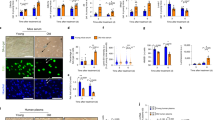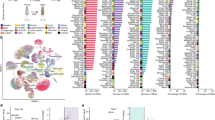Abstract
We describe a small-animal blood exchange approach developed for aging research as an alternative to heterochronic parabiosis or plasma injections. In parabiosis, animals are surgically coupled, which has several disadvantages, including difficulty controlling experimental procedure, the effects of shared organs, environmental enrichment from jointly exploring the housing enclosure, involuntary exercise and an imprecise onset of blood sharing. Likewise, in plasma injections, the added volumes need to be small, and there is little flexibility in changing the relative contributions of ectopic to endogenous blood components. These factors complicate the conclusions and interpretations, including the identification of key mechanisms and molecular or cellular determinants. Our approach, where blood is exchanged between animals without them being surgically coupled, is less invasive than parabiosis. The percentage of exchanged blood or other exchanged fluids is known and precise. The age of plasma and cells can be mixed and matched at all desired relative contributions to the endogenous systemic milieu, and the onset of the effects can be accurately delineated. In this protocol, we describe the preparatory and animal surgery steps required for small-animal blood exchange in mice and compare this process with parabiosis and plasma injections. We also provide the design, hardware and software for the blood exchange device and compare automated and manual exchange methods. Lastly, we report mathematical modeling of the dilution of blood factors. The fluid exchange takes ~30 min when performed by a well-trained biomedical scientist; the entire process takes ~2 h.
This is a preview of subscription content, access via your institution
Access options
Access Nature and 54 other Nature Portfolio journals
Get Nature+, our best-value online-access subscription
$29.99 / 30 days
cancel any time
Subscribe to this journal
Receive 12 print issues and online access
$259.00 per year
only $21.58 per issue
Buy this article
- Purchase on Springer Link
- Instant access to full article PDF
Prices may be subject to local taxes which are calculated during checkout







Similar content being viewed by others
Data availability
The main data discussed in this protocol were generated as part of the studies published in the supporting primary research papers20,21. Blueprints for the fabrication of the dual- and single-pump devices can be found at https://doi.org/10.6084/m9.figshare.19401263.v1. Source data for Fig. 6 can be found at https://doi.org/10.6084/m9.figshare.19401275.v1, and for Fig. 7 at https://doi.org/10.6084/m9.figshare.19401278.v1.
Code availability
The code used in this protocol can be found in Supplementary Information.
References
Villeda, S. A. et al. The ageing systemic milieu negatively regulates neurogenesis and cognitive function. Nature 477, 90–96 (2011).
Villeda, S. A. et al. Young blood reverses age-related impairments in cognitive function and synaptic plasticity in mice. Nat. Med. 20, 659–663 (2014).
Loffredo, F. S. et al. Growth differentiation factor 11 is a circulating factor that reverses age-related cardiac hypertrophy. Cell 153, 828–839 (2013).
Conboy, I. M. et al. Rejuvenation of aged progenitor cells by exposure to a young systemic environment. Nature 433, 760–764 (2005).
Conboy, I. M. & Rando, T. A. Heterochronic parabiosis for the study of the effects of aging on stem cells and their niches. Cell Cycle 11, 2260–2267 (2012).
Conboy, M. J., Conboy, I. M. & Rando, T. A. Heterochronic parabiosis: historical perspective and methodological considerations for studies of aging and longevity. Aging Cell. 12, 525–530 (2013).
Elabd, C. et al. Oxytocin is an age-specific circulating hormone that is necessary for muscle maintenance and regeneration. Nat. Commun. 5, 4082 (2014).
Yousef, H. et al. Aged blood impairs hippocampal neural precursor activity and activates microglia via brain endothelial cell VCAM1. Nat. Med. 25, 988–1000 (2019).
Yousef, H. et al. Systemic attenuation of the TGF-β pathway by a single drug simultaneously rejuvenates hippocampal neurogenesis and myogenesis in the same old mammal. Oncotarget 6, 11959–11978 (2015).
Castellano, J. M. et al. Human umbilical cord plasma proteins revitalize hippocampal function in aged mice. Nature 544, 488–492 (2017).
Yousef, H. et al. Age-associated increase in BMP signaling inhibits hippocampal neurogenesis. Stem Cells 33, 1577–1588 (2015).
Yousef, H. et al. hESC-secreted proteins can be enriched for multiple regenerative therapies by heparin-binding. Aging 5, 357–372 (2013).
Carlson, M. E. et al. Relative roles of TGF- β1 and Wnt in the systemic regulation and aging of satellite cell responses. Aging Cell 8, 676–689 (2009).
Carlson, M. E., Silva, H. S. & Conboy, I. M. Aging of signal transduction pathways, and pathology. Exp. Cell Res. 314, 1951–1961 (2008).
Egerman, M. A. et al. GDF11 Increases with age and inhibits skeletal muscle regeneration. Cell Metab. 22, 164–174 (2015).
Smith, L. K. et al. β2-Microglobulin is a systemic pro-aging factor that impairs cognitive function and neurogenesis. Nat. Med. 21, 932–937 (2015).
Conboy, I. M., Conboy, M. J. & Rebo, J. Systemic problems: a perspective on stem cell aging and rejuvenation. Aging 7, 754–765 (2015).
Schaffer, D. V. & Gage, F. H. Neurogenesis and neuroadaptation. Neuromol. Med. 5, 1–9 (2004).
Bruel-Jungerman, E., Laroche, S. & Rampon, C. New neurons in the dentate gyrus are involved in the expression of enhanced long-term memory following environmental enrichment. Eur. J. Neurosci. 21, 513–521 (2005).
Mehdipour, M. et al. Rejuvenation of three germ layers tissues by exchanging old blood plasma with saline–albumin. Aging 12, 8790–8819 (2020).
Mehdipour, M. et al. Plasma dilution improves cognition and attenuates neuroinflammation in old mice. Geroscience https://doi.org/10.1007/s11357-020-00297-8 (2020).
Rebo, J. et al. A single heterochronic blood exchange reveals rapid inhibition of multiple tissues by old blood. Nat. Commun. 7, 13363 (2016).
Esser, F., Masselter, T. & Speck, T. Silent pumpers: a comparative topical overview of the peristaltic pumping principle in living nature, engineering, and biomimetics. Adv. Intell. Syst. 1, 1900009 (2019).
Horobin, J. T., Sabapathy, S. & Simmonds, M. J. Repetitive supra-physiological shear stress impairs red blood cell deformability and induces hemolysis. Artif. Organs 41, 1017–1025 (2017).
Zhang, T. et al. Study of flow-induced hemolysis using novel couette-type blood-shearing devices. Artif. Organs 35, 1180–1186 (2011).
Finerty, J. C. & Panos, T. C. Parabiosis intoxication. Proc. Soc. Exp. Biol. Med. 76, 833–835 (1951).
Finerty, J. C. Parabiosis in physiological studies. Physiol. Rev. 32, 277–302 (1952).
Horowitz, A. M. et al. Blood factors transfer beneficial effects of exercise on neurogenesis and cognition to the aged brain. Science 369, 167–173 (2020).
De Miguel, Z. et al. Exercise plasma boosts memory and dampens brain inflammation via clusterin. Nature (2021) https://doi.org/10.1038/s41586-021-04183-x
Zhang, G., Budker, V. & Wolff, J. A. High levels of foreign gene expression in hepatocytes after tail vein injections of naked plasmid DNA. Hum. Gene Ther. 10, 1735–1737 (1999).
McKeen, L. W. Introduction to fatigue of plastics and elastomers. Fatigue and Tribological Properties of Plastics and Elastomers 3rd edn (Elsevier, 2016); https://doi.org/10.1016/B978-0-323-44201-5.00001-0
McKeen, L. W. Introduction to the tribology of plastics and elastomers. Fatigue and Tribological Properties of Plastics and Elastomers 3rd edn (Elsevier, 2016); https://doi.org/10.1016/B978-0-323-44201-5.00002-2
Ventola, C. L. Medical applications for 3D printing: current and projected uses. P&T 39, 704–711 (2014).
Mastellos, D. C., Reis, E. S., Ricklin, D., Smith, R. J. & Lambris, J. D. Complement C3-targeted therapy: replacing long-held assertions with evidence-based discovery. Trends Immunol. 38, 383–394 (2017).
Ricklin, D., Hajishengallis, G., Yang, K. & Lambris, J. D. Complement: a key system for immune surveillance and homeostasis. Nat. Immunol. 11, 785–797 (2010).
Kolev, M., Le Friec, G. & Kemper, C. Complement—tapping into new sites and effector systems. Nat. Rev. Immunol. 14, 811–820 (2014).
Hajishengallis, G. & Lambris, J. D. Microbial manipulation of receptor crosstalk in innate immunity. Nat. Rev. Immunol. 11, 187–200 (2011).
Cardoso, A. L. et al. Towards frailty biomarkers: candidates from genes and pathways regulated in aging and age-related diseases. Ageing Res. Rev. 47, 214–277 (2018).
Niyonzima, N. et al. Complement activation by cholesterol crystals triggers a subsequent cytokine response. Mol. Immunol. 84, 43–50 (2017).
Björk, I. & Lindahl, U. Mechanism of the anticoagulant action of heparin. Mol. Cell. Biochem. 48, 161–182 (1982).
Chuang, Y.-J., Swanson, R., Raja, S. M. & Olson, S. T. Heparin enhances the specificity of antithrombin for thrombin and factor Xa independent of the reactive center loop sequence: evidence for an exosite determinant of factor Xa specificity in heparin-activated antithrombin. J. Biol. Chem. 276, 14961–14971 (2001).
Weitz, J. I. New anticoagulants for treatment of venous thromboembolism. Circulation 110, I-19–I-26 (2004).
Acknowledgements
We thank E. Watanabe and A. Benoni for help with exchanges and C3 ELISAs. This work was supported by NIH NHLB R01 139605 to I.C. and K.A., 1R01AG071787 to I.C., Open Philanthropy to I.C., PCARI to I.C., Georges Harik Fund to I.C. and NSF predoctoral fellowship to M.M.
Author information
Authors and Affiliations
Contributions
M.M. provided Figs. 3 and 5, participated in the experiments of Fig. 7 and cowrote the manuscript. P.A., J.D. and K.A. designed and fabricated the device, provided Figs. 1,2 and 4 and cowrote the manuscript. K.A. also integrated the study. C.L. performed the experiments for Fig. 7, provided Fig. 7, edited Fig. 4 and cowrote the manuscript. C.S. and C.K. provided the mathematical equations, and C.K. applied these to Figs. 6 and 7. M.J.C. and I.C. planned, directed and integrated the study and wrote the manuscript.
Corresponding author
Ethics declarations
Competing interests
The authors declare no competing interests.
Peer review
Peer review information
Nature Protocols thanks the anonymous reviewers for their contribution to the peer review of this work.
Additional information
Publisher’s note Springer Nature remains neutral with regard to jurisdictional claims in published maps and institutional affiliations.
Related links
Key references using this protocol
Rebo, J. et al. Nat. Commun. 7, 13363 (2016): https://doi.org/10.1038/ncomms13363
Mehdipour, M. et al. Aging 12, 8790–8819 (2020): https://doi.org/10.18632/aging.103418
Mehdipour, M. et al. GeroScience 43, 1–18 (2021): https://doi.org/10.1007/s11357-020-00297-8
Extended data
Extended Data Fig. 1 Overview and detailed parts and schematics of single-pump small-animal blood exchange device.
a, Overview of single-pump small-animal blood exchange device and detailed description of the parts involved in constructing the external hardware of the pump including appropriate tubing. b, CAD image for 3D-printed hardware housing of the pump with dimensions. c, Exploded view of the single pump illustrating the intersection of the incorporated components. d, Single-pump electrical wiring diagram.
Supplementary information
Supplementary Information
Supplementary Files 1–3.
Rights and permissions
About this article
Cite this article
Mehdipour, M., Amiri, P., Liu, C. et al. Small-animal blood exchange is an emerging approach for systemic aging research. Nat Protoc 17, 2469–2493 (2022). https://doi.org/10.1038/s41596-022-00731-5
Received:
Accepted:
Published:
Issue Date:
DOI: https://doi.org/10.1038/s41596-022-00731-5
Comments
By submitting a comment you agree to abide by our Terms and Community Guidelines. If you find something abusive or that does not comply with our terms or guidelines please flag it as inappropriate.



